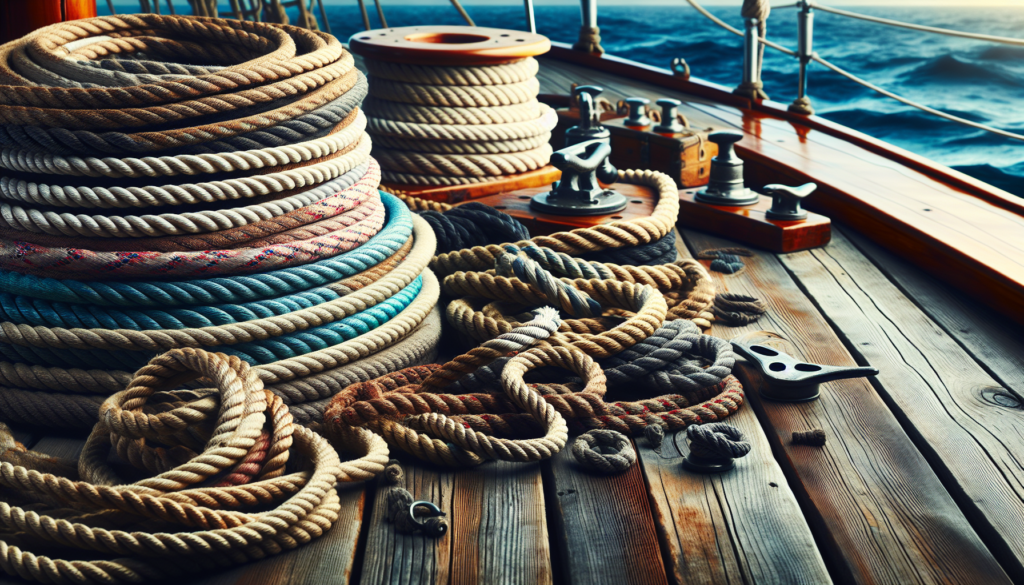Sailing Ropes: Navigating the World of Essential Equipment
Sailing ropes, often referred to as lines in nautical jargon, play a crucial role in the world of sailing. From hoisting sails to securing the boat to a dock, these versatile tools are essential for any sailor looking to navigate the open waters. But what exactly are sailing ropes, and how do they differ from regular ropes? In this comprehensive guide, we’ll delve deep into the world of sailing ropes, exploring their history, types, applications, and importance in the modern sailing world.
The Evolution of Sailing Ropes
To understand the significance of sailing ropes, we must first look back at their evolution over time. Ropes have been used in sailing for centuries, with ancient civilizations like the Egyptians and Phoenicians relying on them for various maritime activities. Over the years, advancements in technology and materials have transformed sailing ropes into specialized tools designed for specific tasks on a boat.
In the early days of sailing, ropes were made from natural fibers like hemp and sisal. These materials were durable and resistant to saltwater corrosion, making them ideal for use at sea. However, with the advent of synthetic fibers like nylon and polyester, the sailing industry saw a revolution in rope manufacturing. Modern sailing ropes are now stronger, lighter, and more resistant to UV rays and abrasion, making them the preferred choice for sailors worldwide.
Types of Sailing Ropes
When it comes to sailing ropes, there is a wide variety of types to choose from, each tailored to specific tasks on a boat. Some common types of sailing ropes include:
1. Main Halyard
The main halyard is used to hoist the main sail up the mast. It is typically made from a high-strength, low-stretch material like Dyneema or Spectra to ensure smooth and efficient sail handling.
2. Jib Sheets
Jib sheets are used to control the jib sail’s angle to the wind. They are often made from a softer, more flexible material like polyester to allow for easy handling and adjustment while sailing.
3. Dock Lines
Dock lines are used to secure the boat to a dock or mooring. They are typically made from a strong, abrasion-resistant material like nylon to withstand the constant strain and movement of the boat while docked.
4. Reefing Lines
Reefing lines are used to shorten the sail in heavy winds. They are often made from a high-strength, low-stretch material like Dyneema to ensure quick and secure reefing of the sail when needed.
The Importance of Sailing Ropes
For any sailor, having the right sailing ropes on board is essential for a safe and successful voyage. These ropes not only help in maneuvering the boat and adjusting the sails but also play a crucial role in emergency situations. Whether it’s securing the boat in a storm or towing another vessel to safety, sailing ropes are indispensable tools for sailors of all levels of experience.
Moreover, the quality and condition of sailing ropes can directly impact a boat’s performance and safety. Frayed or worn-out ropes can pose a serious risk of breakage, leading to potential accidents or damage to the boat. Regular inspection and maintenance of sailing ropes are therefore paramount to ensure a smooth and trouble-free sailing experience.
Expert Opinions
We spoke to seasoned sailors and industry experts to get their insights on the importance of sailing ropes. Captain John Smith, a veteran sailor with over 30 years of experience, emphasized the role of high-quality ropes in sailing, stating, “Having strong and reliable ropes on board can make all the difference between a successful voyage and a disaster at sea.”
Similarly, marine engineer Dr. Emily Jones highlighted the advancements in rope technology, saying, “The development of synthetic fibers has revolutionized the sailing industry, making ropes lighter, stronger, and more durable than ever before. Sailors now have a wide range of options to choose from, tailored to their specific needs and preferences.”
Common Misconceptions
Despite the importance of sailing ropes, there are several common misconceptions surrounding their use and maintenance. One prevalent misconception is that all ropes are the same and can be used interchangeably on a boat. In reality, each type of sailing rope serves a specific purpose and must be chosen carefully based on the task at hand.
Another misconception is that sailing ropes are indestructible and do not require regular maintenance. This can lead to neglect and a false sense of security, potentially putting the boat and crew at risk. Regular inspection, cleaning, and replacement of worn-out ropes are essential to ensure safe sailing practices.
Comparative Analysis
When comparing natural fibers like hemp and synthetic fibers like nylon, polyester, and Dyneema, each type has its advantages and disadvantages. Natural fibers are biodegradable and have a traditional aesthetic appeal, making them popular among purists and traditionalists in the sailing community. However, they are more prone to UV degradation and require more frequent maintenance compared to synthetic fibers.
On the other hand, synthetic fibers offer superior strength, durability, and resistance to UV rays and abrasion. They are also more lightweight and easier to handle, making them a practical choice for modern sailors looking for efficiency and performance. Ultimately, the choice between natural and synthetic fibers comes down to personal preference, budget, and sailing conditions.
Conclusion
In conclusion, sailing ropes are essential tools for any sailor looking to navigate the open waters safely and efficiently. With a wide range of types and materials to choose from, sailors have the flexibility to tailor their rope selection to their specific needs and preferences. By understanding the history, types, and importance of sailing ropes, sailors can make informed decisions to enhance their sailing experience and ensure a successful voyage.
So, the next time you set sail, remember the crucial role that sailing ropes play in your journey and make sure to have high-quality ropes on board to navigate the seas with confidence. Happy sailing!



